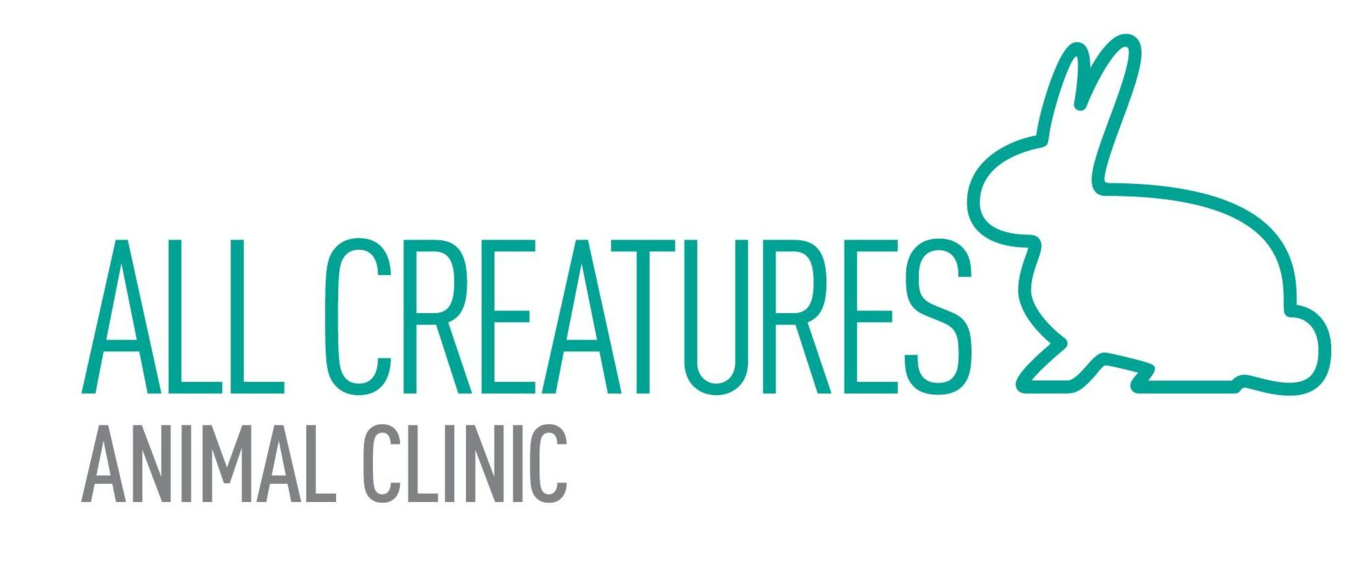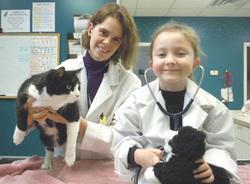There’s a pandemic on and I’m stuck at home-what a great time to get a puppy! Well, yes and no. We get it. Puppies bring joy and purpose to our lives, and we can all use some of that right now. Seeing the new puppies come through our clinic has been a bright spot for all of the All Creatures staff during this strange and difficult time. But, raising a puppy when we are all physically distancing from each other does present a few big challenges. Let’s explore what those are and how we can overcome them.
What is socialization and why is it so important?
When puppies are about 8-14 weeks old, they go through an amazing developmental period in which they are minimally fearful and their brains are happy to accept new experiences as normal. If we expose puppies to new experiences in positive ways during this period of time, we can get them to think “all of this is good and normal and definitely NOT scary.” In our profession, we meet many dogs who are very scared of vet visits, strangers, dogs, etc. More often than not, these dogs were not well socialized to these “triggers” during the critical 8-14 week time frame.
What kinds of things do I need to socialize my puppy to?
Basically- everything. Definitely you want your puppy to interact with many people and as many other dogs as possible. All of this should be done in a positive, gentle, safe way. We also want exposure to many other stimuli; cats, babies, children, people in hats, vacuums, various floor textures, thunderstorm and firework noises, various textures, nail trims, ear and foot examination. It is a great idea to do a “mock-exam” at home where you hold your puppy on a table and go through the motions of a vet visit- touch their feet, trim a few nails and look in their mouths and ears. In normal times, we recommend that all puppies go to training and socialization classes- start early and go regularly.
What is the concern with dogs and COVID-19?
Unfortunately, many of our best recommendations for puppies are difficult to pull off with physical distancing rules in place. So far, only a few dogs have ever tested positive for the new coronavirus, and none have been shown to get sick or transmit the disease. However, there is a small risk of transferring the virus from person to person when 2 different people touch a dog’s fur. Though this risk is thought to be very low, it is important to take into consideration. The biggest risk factor for coronavirus transmission is being in close proximity to another human.
So, how do I socialize my puppy while keeping safe distances?
First, remember that many of the items on your socializing to-do list are just as easy to do as before. Introducing your dog to nail trims, mock-exams, floor textures, loud noises (especially thunderstorm and firework sounds), vacuums and more is still necessary and available. You can take it a step further, and play dress-up. Put on hats, sunglasses and flashy/strange clothes. Practice going through basic obedience training with your puppy while wearing these funny get-ups. This will teach your pup to expect the unexpected when it comes to how people look.
The big challenge- socializing to dogs and people?
Do the best you can and get creative. Drive around with your dog. Go to a place where others are walking their dogs- you can sit at a bench or in a car and watch them go by. Give your dog a small training treat and/or praise every time a dog or a person comes close by. Do this every single day during this golden window of time. Find a fence buddy if possible. Talk to your neighbors with friendly dogs (from a safe distance of course). Give your pup treats and praise for coming over to check out the neighbor through the fence. Play videos and audio of dogs- praise and reward your puppy when they take note of the digital dogs.
Moving forward, there may be room for some in-person doggy play dates too. With appropriate face coverings, physical distancing and hand-washing, a doggy playdate in an outdoor area can be accomplished with minimal risk to the dog owners. However, please weigh all factors before deciding if this is right for you- local laws and rules, risk status of all the human parties involved and local prevalence of COVID-19. As dog training and socialization facilities begin to open back up, you may also find new socialization opportunities. Check with these facilities before signing up to ensure that they are doing everything they can to minimize the risk of disease spread.
Don’t forget about Parvovirus!
Long before COVID-19, parvovirus has been a difficult issue to contend with when trying to socialize our young pups. Parvovirus is an extremely contagious and fairly dangerous gastrointestinal disease of dogs. It occurs most often in young puppies that have not yet been fully vaccinated. The “distemper” shot that your dog gets as a puppy protects against this common pathogen. Until your puppy has completed its full series of vaccines (at about 4-5 months old), they should NOT be allowed access to any grassy areas where dogs are frequently present. Parvovirus can live in a contaminated lawn for many years. Vet hospitals and pet stores are able to clean their floors with special cleaners every day in order to keep our facilities disease free.
Preventing separation anxiety.
In addition to good socialization, we also want to protect our pandemic pups from developing separation anxiety. Crate training can help a lot with this. Your puppy should be given several stretches of “solo time” each day in order to help them build confidence and independence. Training toys and treats can help make these solo times a happy time for your pup.
Stack the odds in your favor.
All pandemic puppies should be using a few of the excellent anxiety reducers that we employ regularly. Adaptil products (collar, diffuser, spray) deliver a pheromone to your puppy that says “everything is ok.” Regular use of this during the early socialization phase has been shown to reduce behavioral problems as adults. We also have safe and effective herbal calming treats such as Solliquin that can make an excellent contribution to your pup’s stability and well-being. Any advantage you can give your puppy during this critical period will pay off big-time down the road.
Links
More puppy education: All Creatures Animal Clinic- Dogs
Order Adaptil through our online store. Online store: adaptil products








